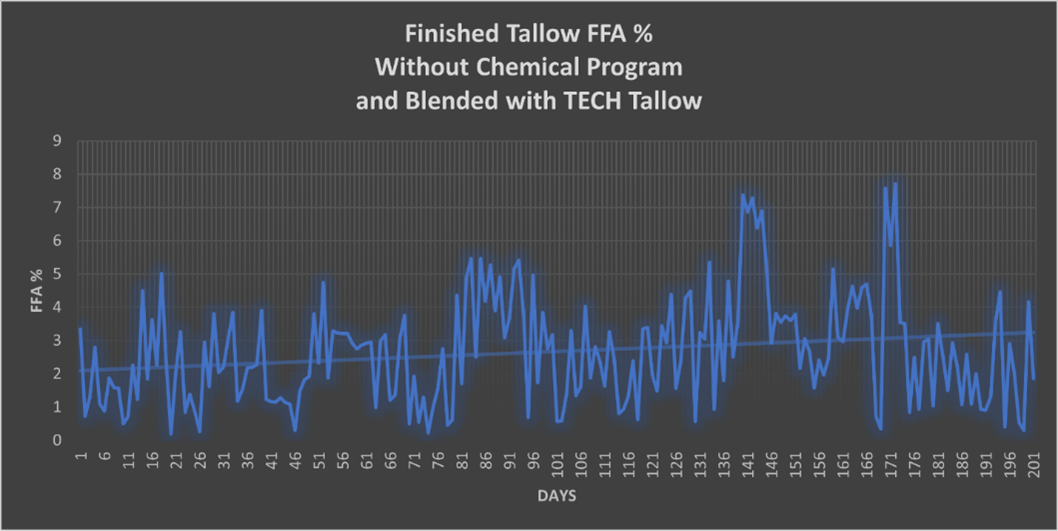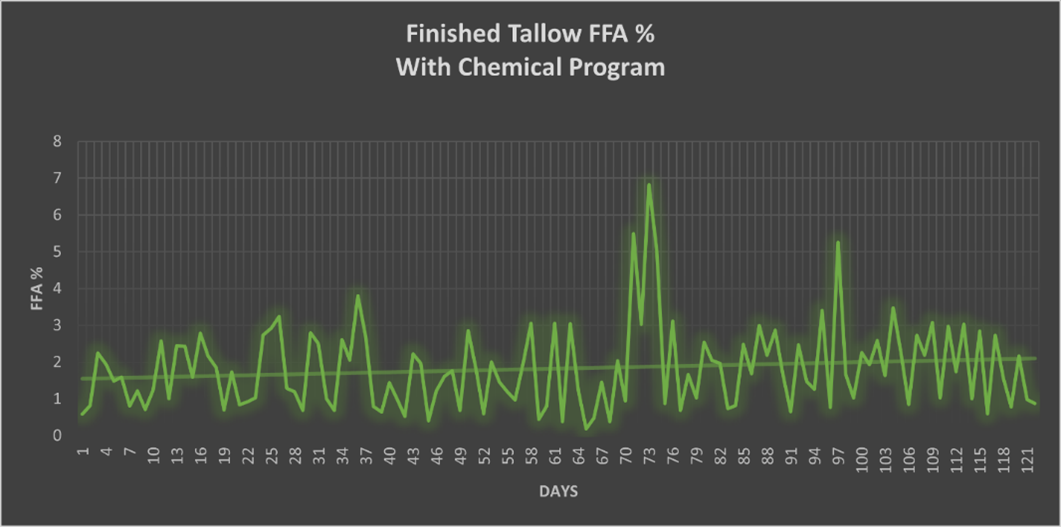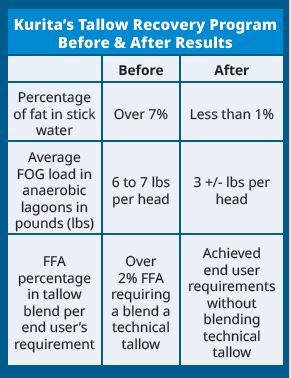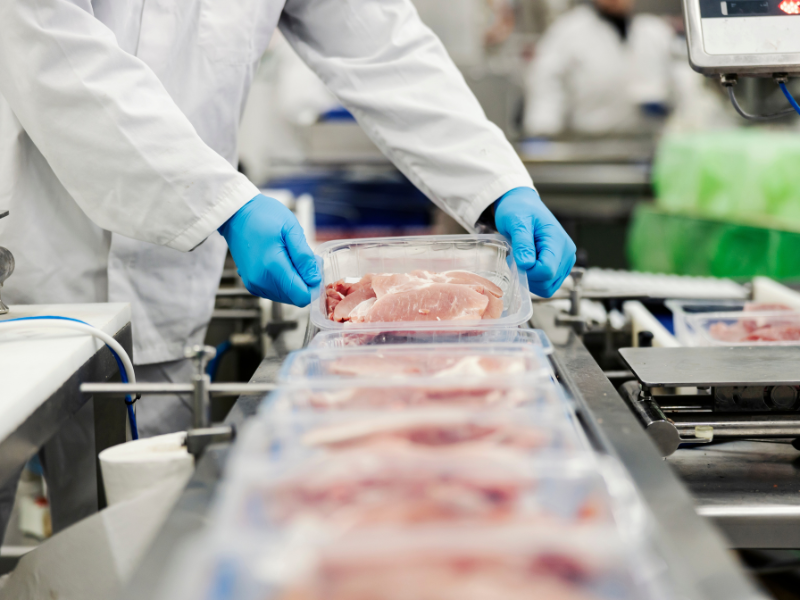A meat processing facility in the Midwest had over seven percent fat in their stick water sent back to the dissolved air flotation (DAF) systems. Stick water is the heavy liquid phase should be free and clear of any tallow or suspended solids. Separator inefficiencies result in high proteins and other nutrients in the stick water being recycled back to the front of the treatment process, requiring additional treatment. Because of the high organic load in the stick water, the DAF influent contaminant loading was increased by the addition of high total suspended solids (TSS); fat, oil, and grease (FOG); and temperature. This affected the chemical treatment program for the DAF and ultimately altered the downstream treatment in the two anaerobic lagoons and beyond.
Recovered tallow quality determines the price end users will pay for the product. The end user of the finished inedible tallow required equal to or less than two percent free fatty acids (FFA), which the plant could not achieve without blending a higher-grade technical tallow. Technical tallow is a high grade, high revenue product.
The facility was feeding lactic acid ahead of the separators to assist with breaking up the emulsion and improving the contaminant removal in the stick water, only to find deficiencies:
- High fat percentage in stick water
- Increased downtime
- Impact on finished tallow quality, which required the blending of high-grade technical tallow to meet FFA requirements
- Inability to reduce daily DAF load
In order to provide a more efficient tallow recovery process, the facility realized the need for improvement. Kurita was asked to address these issues and provide a solution to improve the performance of the separators to meet plant expectations.
Kurita worked with the facility to understand their needs and current issues, including taking samples, running tests, and identifying the pinch points within this process. With these samples and the plant’s goals in mind, Kurita found a comprehensive solution based on their process knowledge.
Kurita developed a solution with chemical and process changes, including introducing a chemical treatment to the separator influent to break up the emulsified tallow and allow the separators to perform to manufacturer specifications. Cleaning agents, chemical treatment, and other surfactants can bind up the tallow, creating an emulsion layer (rag layer), which prevents optimal separation. This results in a lower overall quality of finished tallow and an elevated level of contaminants in the stick water.
The separator process consists of heavy and light liquid phases and solids. The tallow (light liquid) can be recovered. The stick water (heavy liquid) is discharged for recycling. The solids are discharged based on the discretion of the facility. Without impacting the current DAF treatment program, Kurita’s solution was easily implemented.
Kurita created a fully automated program to feed each separator individually, which allowed the customer to isolate each separator without disrupting the program. The feed rate was adjusted based on the flow entering each separator, and the pumps would shut off during a clean-in-place (CIP) event. Hourly samples were taken by the operators and spun on their bench top centrifuge to validate the performance and adjust the program accordingly. Kurita also confirmed the tallow recovery program by running their own tests to ensure nothing has changed with regards to the product sent to the separators, which would require a modification to the dosage.
Since Kurita implemented their tallow recovery program at the meat rendering facility in September 2023, there has been a reduction of percent fat in stick water and a decrease in process downtime as well as an increase in the volume of finished tallow. The higher quality stick water has also allowed for a decrease in the chemical treatment program to the DAF. The program has permitted the operators to clean the DAF off in a timely manner without carrying excess load over to the following day.


Since the inception of the treatment program, the quality of the stick water sent back to the DAF is consistently less than one percent fat, improving the DAF influent quality and overall removal efficiencies. FOG levels have decreased from between six and seven pounds per head (lbs./head) to approximately three to four lbs./head in the anaerobic influent. This has greatly improved the health and performance in the anaerobic process and secondary treatment. Kurita’s treatment program, based on information from the facility, has provided the following:
- increased finished tallow volume
- reduced and/or eliminated the rag layer
- improved the stick water quality
- enhanced the efficiency of light and heavy liquid phases and removed solids
The meat rendering plant no longer needs to blend high-grade technical tallow with inedible tallow to achieve FAA requirements by the end user. The facility has identified Kurita’s treatment solution as an essential part of their tallow recovery process. The results to date are consistent and exceeding plant expectations.


